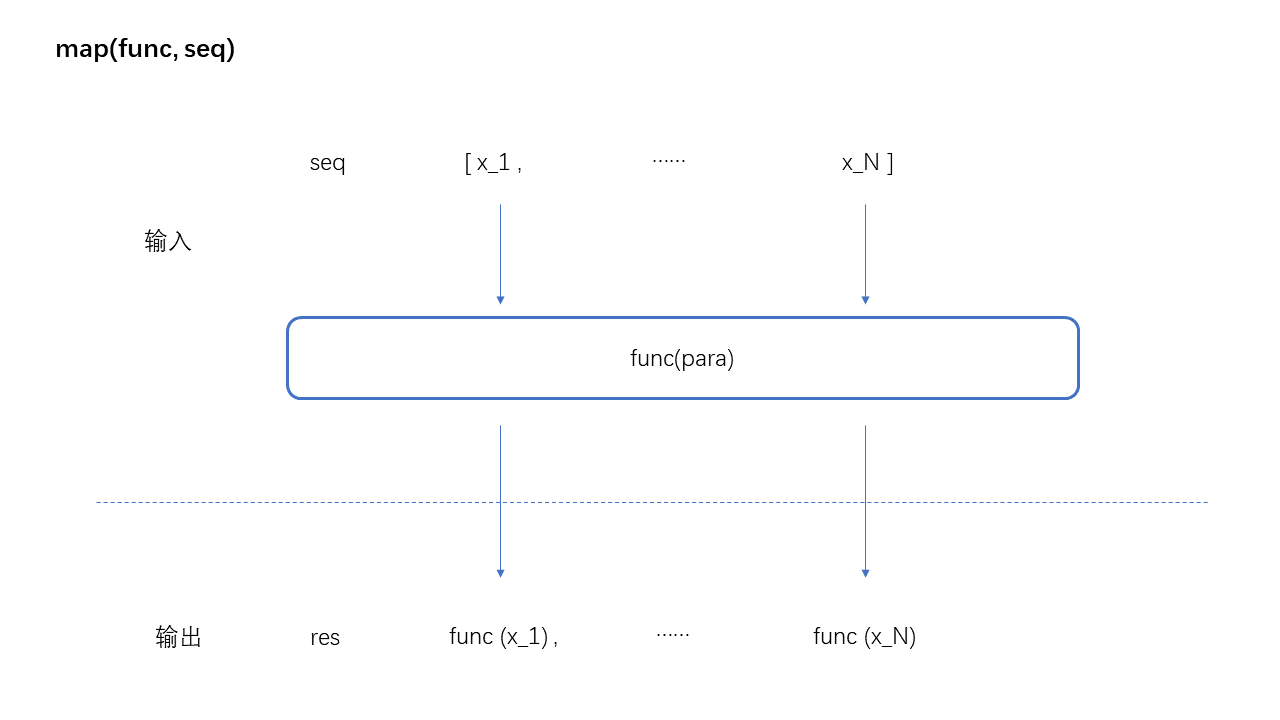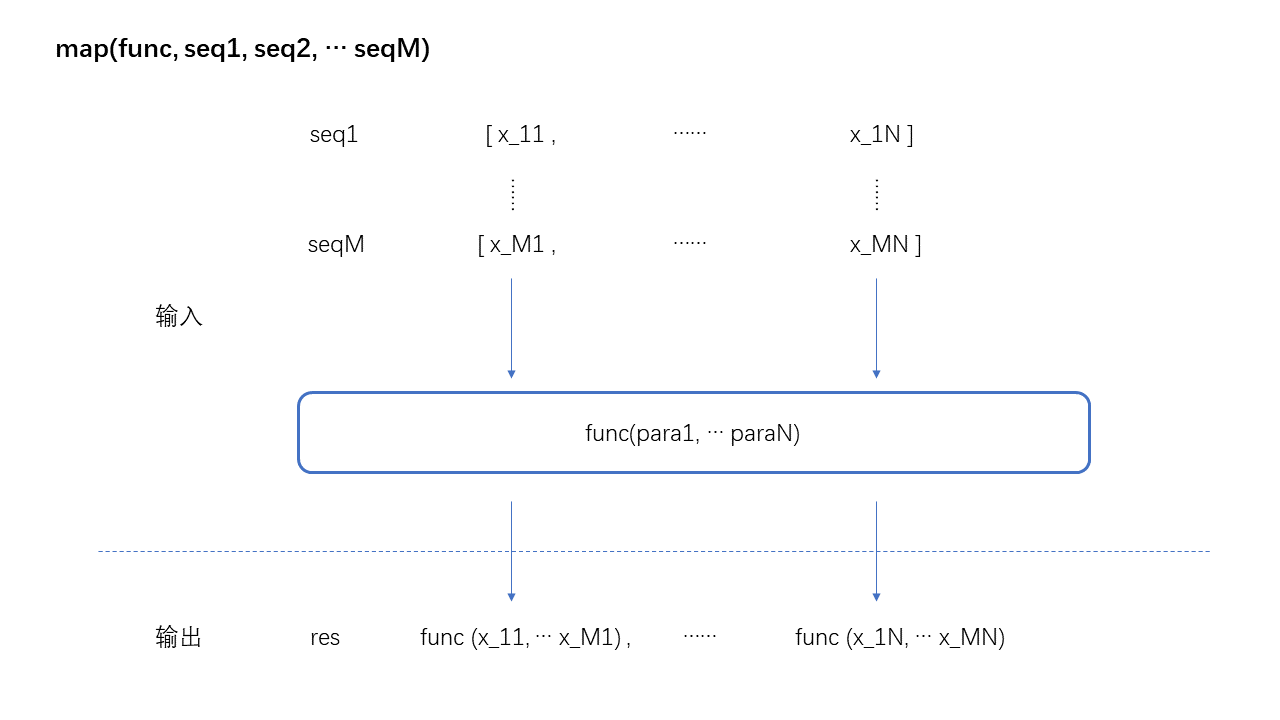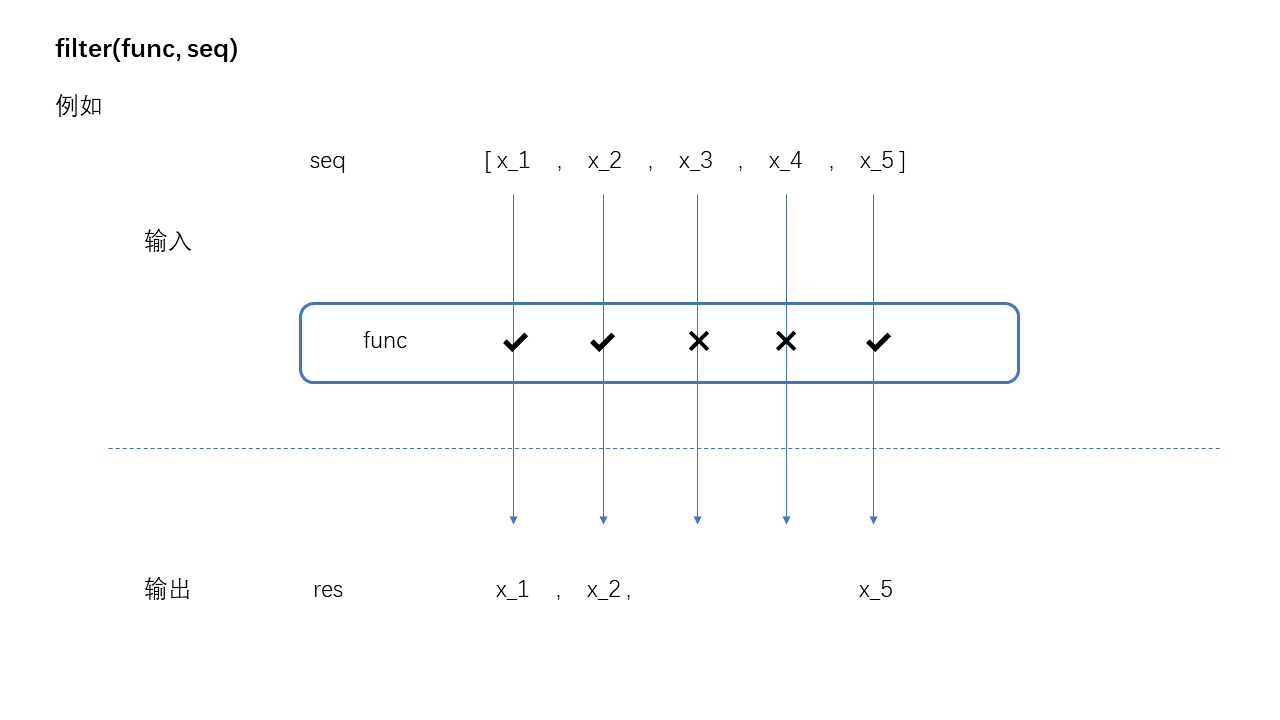这篇文章主要介绍 Python 中几个常用的内置函数,用好这几个函数可以让自己的代码更加 Pythonnic 哦
1、map
map() 将函数 func 作用于序列 seq 的每一个元素,并返回处理后的结果,其语法格式如下:
map(func, seq)
其中,func 为处理函数,seq 为序列,该方法返回一个迭代器对象,可以使用 list() 方法使其变成列表类型

以下是一个例子:
>>> res = map(lambda x: x**2, [1,2,3])
>>> type(res)
# <class 'map'>
>>> print([item for item in res])
# [1, 4, 9]
该方法还接受多个序列作为参数,其语法格式如下:
map(func, seq1, seq2, … seqM)
其中,func 为处理函数,seq1 ... seqM 为序列

以下是一个例子:
>>> res = map(lambda x,y : x+y, [1,2,3], [4,5,6])
>>> type(res)
# <class 'map'>
>>> print([item for item in res])
# [5, 7, 9]
2、zip
zip() 函数用于打包序列,其语法格式如下:
zip(seq1, seq2, … seqM)
其中,seq1 ... seqM 为序列,该方法返回一个迭代器对象
注意,若提供的序列长度不同,则返回的对象长度与最短序列的长度相同

以下是一个例子:
>>> res = zip([1,2,3],[4,5,6])
>>> # 类似于 res = map(lambda x,y : (x,y), [1,2,3], [4,5,6])
>>> type(res)
# <class 'zip'>
>>> print([item for item in res])
# [(1, 4), (2, 5), (3, 6)]
3、filter
filter() 函数用于过滤序列,根据 func 的作用结果进行过滤,其语法格式如下:
filter(func, seq)
其中,func 为处理函数,seq 为序列,该方法返回一个迭代器对象

以下是一个例子:
>>> res = filter(lambda x : x%2==0, [1,2,3,4,5,6])
>>> type(res)
# <class 'filter'>
>>> print([item for item in res])
# [2, 4, 6]
【 阅读更多 Python 系列文章,请看 Python学习笔记 】